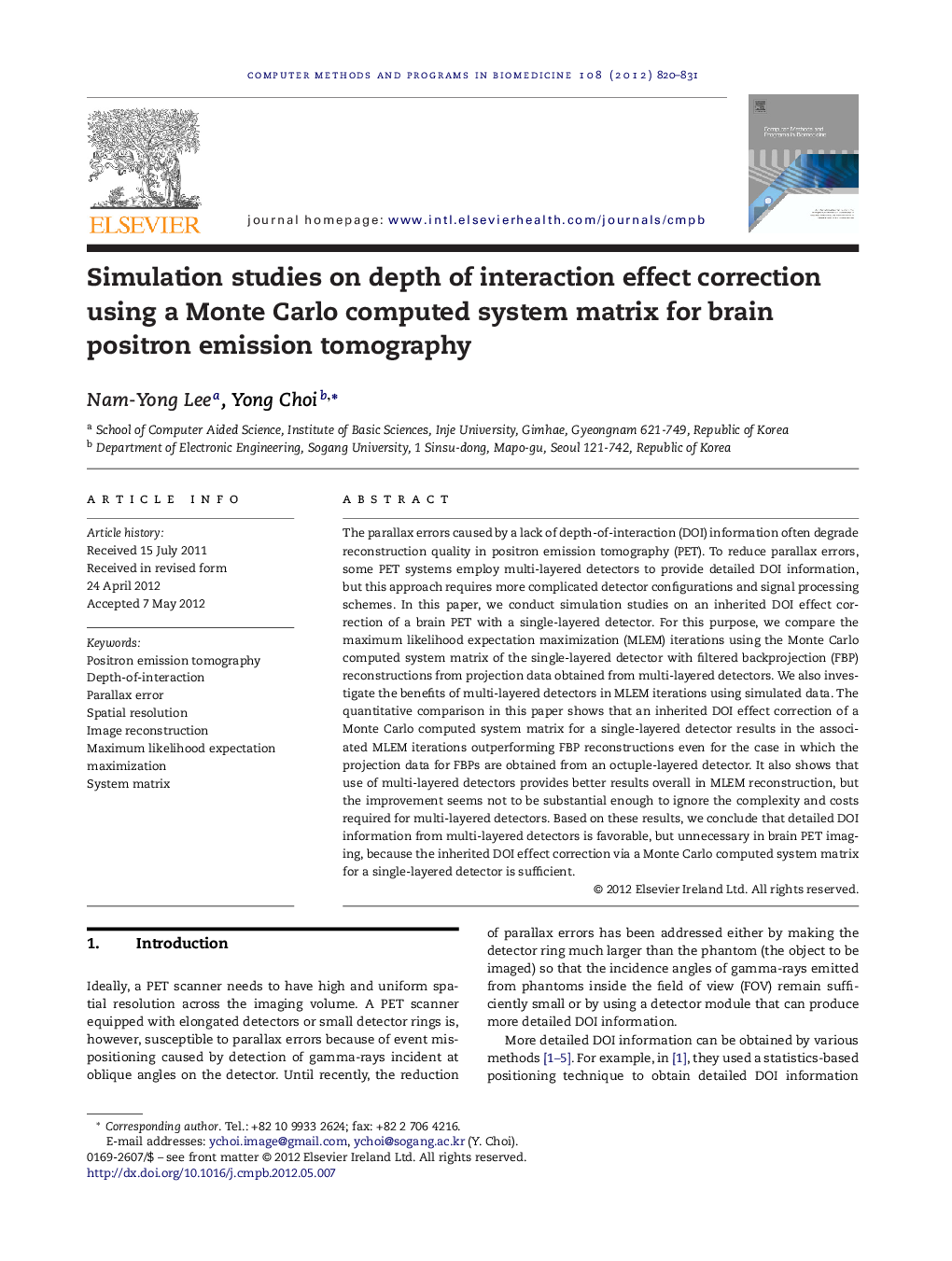| Article ID | Journal | Published Year | Pages | File Type |
|---|---|---|---|---|
| 467931 | Computer Methods and Programs in Biomedicine | 2012 | 12 Pages |
The parallax errors caused by a lack of depth-of-interaction (DOI) information often degrade reconstruction quality in positron emission tomography (PET). To reduce parallax errors, some PET systems employ multi-layered detectors to provide detailed DOI information, but this approach requires more complicated detector configurations and signal processing schemes. In this paper, we conduct simulation studies on an inherited DOI effect correction of a brain PET with a single-layered detector. For this purpose, we compare the maximum likelihood expectation maximization (MLEM) iterations using the Monte Carlo computed system matrix of the single-layered detector with filtered backprojection (FBP) reconstructions from projection data obtained from multi-layered detectors. We also investigate the benefits of multi-layered detectors in MLEM iterations using simulated data. The quantitative comparison in this paper shows that an inherited DOI effect correction of a Monte Carlo computed system matrix for a single-layered detector results in the associated MLEM iterations outperforming FBP reconstructions even for the case in which the projection data for FBPs are obtained from an octuple-layered detector. It also shows that use of multi-layered detectors provides better results overall in MLEM reconstruction, but the improvement seems not to be substantial enough to ignore the complexity and costs required for multi-layered detectors. Based on these results, we conclude that detailed DOI information from multi-layered detectors is favorable, but unnecessary in brain PET imaging, because the inherited DOI effect correction via a Monte Carlo computed system matrix for a single-layered detector is sufficient.
